
|
Now it is bright as 10.1 mag (Nov. 22, Maik Meyer). It is observable all night in the Northern Hemisphere. In the Northern Hemisphere, it stays observable in excellent condition for a long time. In the Southern Hemisphere, it will never be observable again after this. It started fading before the peirhelion passage.
Date(TT) R.A. (2000) Decl. Delta r Elong. m1 Best Time(A, h)
Dec. 2 2 27.39 86 20.9 0.961 1.642 115 9.8 21:37 (180, 38)
Dec. 9 0 42.98 86 44.9 1.021 1.683 114 10.1 19:26 (180, 38)
|
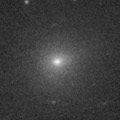
|
Now it is 11.5 mag (Nov. 24, Seiichi Yoshida). It stays 11 mag until December. It is observable in good condition in the Northern Hemisphere. It locates very low for a long time in the Southern Hemisphere. Juan Jose Gonzalez reported it is bright as 10.1 mag on Nov. 26.
Date(TT) R.A. (2000) Decl. Delta r Elong. m1 Best Time(A, h)
Dec. 2 13 7.49 2 55.4 1.464 1.223 55 10.8 5:20 (297, 37)
Dec. 9 13 31.27 0 53.5 1.471 1.241 56 11.1 5:26 (300, 37)
|
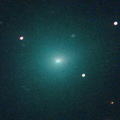
|
Now it is very bright as 9.8 mag (Nov. 26, Juan Jose Gonzalez). It stays 10 mag until winter. It is observable in good condition in the Northern Hemisphere. It locates low in the Southern Hemisphere.
Date(TT) R.A. (2000) Decl. Delta r Elong. m1 Best Time(A, h)
Dec. 2 11 54.55 8 18.8 1.287 1.395 74 11.2 5:20 (310, 53)
Dec. 9 12 15.17 7 2.6 1.265 1.408 76 11.3 5:26 (315, 54)
|
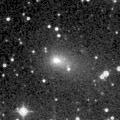
|
Now it is 11.1 mag (Nov. 26, Juan Jose Gonzalez). It will stay bright as 11 mag for a long time from winter to next spring. In the Southern Hemisphere, it stays observable in good condition until next February. In the Northern Hemispehre, it stays observable for a long time after this until the comet fades out.
Date(TT) R.A. (2000) Decl. Delta r Elong. m1 Best Time(A, h)
Dec. 2 5 2.50 5 55.5 2.133 3.088 162 11.5 0:21 ( 0, 61)
Dec. 9 4 53.59 7 38.5 2.089 3.050 164 11.4 23:39 ( 0, 63)
|
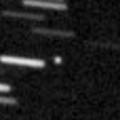
|
Now it is 13.2 mag (Dec. 1, Katsumi Yoshimoto). It will approach to Earth down to 0.07 a.u. in mid December, and it will brighten up to 10 mag. In the Northern Hemisphere, it stays observable in excellent condition until mid December. In the Southern Hemisphere, it stays low.
Date(TT) R.A. (2000) Decl. Delta r Elong. m1 Best Time(A, h)
Dec. 2 6 44.28 39 20.2 0.289 1.238 146 13.2 2:03 (180, 86)
Dec. 9 5 50.53 43 20.6 0.163 1.137 157 11.6 0:46 (180, 82)
|

|
It brightened up to 7.1 mag from May to June (June 21, Juan Jose Gonzalez). Now it is fading. It has already faded down to 12.4 mag (Nov. 9, Chris Wyatt). In the Southern Hemisphere, it stays observable for a long time after this. It will never be observable again in the Northern Hemisphere.
Date(TT) R.A. (2000) Decl. Delta r Elong. m1 Best Time(A, h)
Dec. 2 19 34.35 -56 50.1 3.296 2.737 48 12.5 18:18 ( 26,-12)
Dec. 9 19 56.20 -56 29.9 3.394 2.803 46 12.7 18:18 ( 27,-12)
|
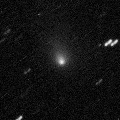
|
It brightened very rapidly from July to August. Now it is very bright as 14.2 mag (Nov. 8, Chris Wyatt). It is observable in excellent condition in the Southern Hemisphere. It stays low for a while in the Northern Hemisphere.
Date(TT) R.A. (2000) Decl. Delta r Elong. m1 Best Time(A, h)
Dec. 2 23 55.67 -27 15.4 2.157 2.478 97 13.5 19:10 ( 0, 28)
Dec. 9 23 59.32 -25 23.7 2.210 2.453 92 13.4 18:47 ( 0, 30)
|

|
Now it is visible visually at 13.4 mag (Nov. 14, Sandor Szabo).
Date(TT) R.A. (2000) Decl. Delta r Elong. m1 Best Time(A, h)
Dec. 2 21 17.39 -13 27.2 6.105 5.806 67 13.7 18:18 ( 32, 36)
Dec. 9 21 21.07 -13 7.6 6.206 5.805 61 13.7 18:18 ( 39, 33)
|

|
Now it is 14.0 mag (Nov. 28, Toshihiko Ikemura, Hirohisa Sato). It is expected to brighten up to 12 mag from 2018 to 2019. In the Northern Hemisphere, it stays observable in good condition while the comet will be brightening gradually. In the Southern Hemisphere, it is not observable until 2018 October.
Date(TT) R.A. (2000) Decl. Delta r Elong. m1 Best Time(A, h)
Dec. 2 15 25.25 48 9.4 3.731 3.547 71 14.1 5:20 (230, 31)
Dec. 9 15 29.57 48 55.8 3.631 3.502 74 13.9 5:26 (231, 36)
|
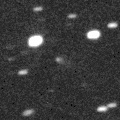
|
Now it is 14.9 mag (Dec. 1, Katsumi Yoshimoto). It will approach to Earth down to 0.2 a.u., and to Sun down to 0.6 a.u., and it is expected to brighten up to 10-11 mag from winter to spring. In the Northern Hemisphre, it stays observable in good condition until January, but it will be extremely low after that. In the Southern Hemisphere, it is not observable from January to mid March, but it stays observable in good condition except for that period.
Date(TT) R.A. (2000) Decl. Delta r Elong. m1 Best Time(A, h)
Dec. 2 8 56.94 -1 20.4 1.048 1.682 111 14.8 4:14 ( 0, 54)
Dec. 9 8 56.52 1 2.2 0.837 1.575 119 14.1 3:46 ( 0, 56)
|
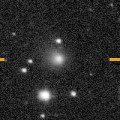
|
Now it is 13.7 mag (Nov. 14, Gabor Santa). It is expected to brighten up to 10 mag in summer in 2018. In the Northern Hemisphere, it stays observable until 2018 summer while the comet will be brightening. However, it will be extremely low from December to January. In the Southern Hemisphere, it is hardly observable in 2017, but it will be observable in good condition in 2018.
Date(TT) R.A. (2000) Decl. Delta r Elong. m1 Best Time(A, h)
Dec. 2 17 48.74 13 16.8 4.236 3.536 39 14.3 18:18 ( 94, 17)
Dec. 9 17 55.20 11 56.1 4.217 3.481 37 14.2 18:18 ( 96, 12)
|

|
It brightened up to 11.6 mag in mid October (Oct. 13, Chris Wyatt). It passed the perihelion on Oct. 27. It will not be observable after this.
Date(TT) R.A. (2000) Decl. Delta r Elong. m1 Best Time(A, h)
Dec. 2 17 2.25 -12 58.6 1.967 1.020 11 14.3 18:18 ( 79, -7)
Dec. 9 17 20.83 -14 5.1 2.116 1.157 9 15.1 18:18 ( 80,-10)
|
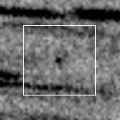
|
It will brighten very rapidly, and brighten up to 11 mag from January to February. In the Northern Hemisphere, it stays observable for a long time in the evening sky. In the Southern Hemisphere, it locates extremely low at the highlight.
Date(TT) R.A. (2000) Decl. Delta r Elong. m1 Best Time(A, h)
Dec. 2 19 41.39 -12 7.9 1.697 1.236 46 15.0 18:18 ( 55, 23)
Dec. 9 20 3.46 -11 51.1 1.660 1.177 44 14.4 18:18 ( 56, 22)
|

|
Now it is 14.2 mag (Nov. 14, Artyom Novichonok). It will be observable at 14 mag for a long time from 2017 to 2018. In the Southern Hemisphere, it will be hardly observable after this. It will be extremely low from November to December in the Northern Hemisphere.
Date(TT) R.A. (2000) Decl. Delta r Elong. m1 Best Time(A, h)
Dec. 2 16 21.50 19 48.5 4.473 3.796 41 14.6 5:20 (251, 8)
Dec. 9 16 24.20 20 20.3 4.429 3.785 44 14.6 5:26 (255, 14)
|
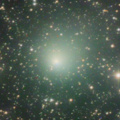
|
It brightened up to 10 mag from spring to summer. Now it is fading. It has already faded down to 13.2 mag (Nov. 7, Thomas Lehmann). It is observable in excellent condition in the Southern Hemisphere. It locates low in the Northern Hemisphere.
Date(TT) R.A. (2000) Decl. Delta r Elong. m1 Best Time(A, h)
Dec. 2 21 34.42 -23 26.5 2.261 2.115 68 14.8 18:18 ( 23, 28)
Dec. 9 21 48.47 -21 56.6 2.369 2.152 65 15.1 18:18 ( 27, 28)
|
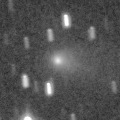
|
Now it is 15.7 mag (Nov. 22, Sandor Szabo). It brightened rapidly. It is observable at 15 mag in autumn in good condition in the Northern Hemisphere. It locates low in the Southern Hemisphere.
Date(TT) R.A. (2000) Decl. Delta r Elong. m1 Best Time(A, h)
Dec. 2 5 28.30 39 26.5 1.128 2.078 158 15.0 0:47 (180, 86)
Dec. 9 5 21.63 39 57.6 1.143 2.103 162 15.0 0:12 (180, 85)
|
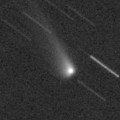
|
Now it is 15.1 mag (Nov. 22, Sandor Szabo). It stays observable at 15-16 mag for a long time from 2017 to 2018.
Date(TT) R.A. (2000) Decl. Delta r Elong. m1 Best Time(A, h)
Dec. 2 0 24.39 4 57.9 3.719 4.269 117 15.2 19:39 ( 0, 60)
Dec. 9 0 19.71 3 30.7 3.843 4.267 109 15.2 19:07 ( 0, 59)
|
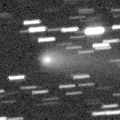
|
It brightened up to 12.2 mag in August (Aug. 21, Juan Jose Gonzalez). It is fading now. It has already faded down to 15.2 mag (Nov. 22, Sandor Szabo).
Date(TT) R.A. (2000) Decl. Delta r Elong. m1 Best Time(A, h)
Dec. 2 8 20.04 11 2.3 1.317 2.046 124 15.3 3:37 ( 0, 66)
Dec. 9 8 16.45 11 43.2 1.306 2.103 132 15.5 3:06 ( 0, 67)
|

|
Now it is 14.5 mag (Nov. 9, Chris Wyatt). It stays 15 mag until winter. In the Southern Hemisphere, it stays observable in excellent condition until spring in 2018. In the Northern Hemisphere, it stays unobservable until 2018.
Date(TT) R.A. (2000) Decl. Delta r Elong. m1 Best Time(A, h)
Dec. 2 1 26.41 -63 38.9 1.837 2.040 87 15.4 20:41 ( 0, -8)
Dec. 9 1 29.12 -59 35.3 1.826 2.026 86 15.4 20:16 ( 0, -4)
|
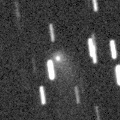
|
Now it is 14.8 mag (Nov. 14, Gabor Santa). In the Northern Hemisphere, it stays 15 mag until winter, and it is observable in excellent condition. It is not observable at all after this in the Southern Hemisphere.
Date(TT) R.A. (2000) Decl. Delta r Elong. m1 Best Time(A, h)
Dec. 2 19 47.61 62 31.2 3.082 3.282 92 15.6 18:18 (148, 49)
Dec. 9 19 50.35 62 7.1 3.126 3.298 91 15.7 18:18 (146, 46)
|
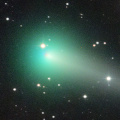
|
It brightened up to 6.2 mag in April (Apr. 7, Juan Jose Gonzalez). Now it is fading rapidly. It has already faded down to 13.5 mag (Nov. 14, Sandor Szabo). It stays observable for a long time after this.
Date(TT) R.A. (2000) Decl. Delta r Elong. m1 Best Time(A, h)
Dec. 2 2 51.59 16 49.2 2.196 3.121 155 15.6 22:05 ( 0, 72)
Dec. 9 2 47.60 16 21.4 2.324 3.199 147 15.9 21:34 ( 0, 71)
|

|
Now it is 15.0 mag (Nov. 22, Sandor Szabo). It stays 17 mag in 2018.
Date(TT) R.A. (2000) Decl. Delta r Elong. m1 Best Time(A, h)
Dec. 2 3 19.53 -1 12.9 5.383 6.263 150 15.6 22:33 ( 0, 54)
Dec. 9 3 17.40 -1 16.8 5.462 6.292 144 15.7 22:04 ( 0, 54)
|
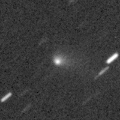
|
It brightened rapidly. Now it is bright as 14.8 mag (Nov. 22, Sandor Szabo). Return of a new periodic comet which brightened up to 13 mag in 2004. It is be observable in excellent condition in autumn. It continues brightening even after the perihelion passage.
Date(TT) R.A. (2000) Decl. Delta r Elong. m1 Best Time(A, h)
Dec. 2 2 15.11 14 42.3 0.870 1.778 146 15.7 21:29 ( 0, 70)
Dec. 9 2 15.61 16 3.0 0.926 1.796 140 15.9 21:03 ( 0, 71)
|

|
Now it is 16.4 mag (Nov. 23, Toshihiko Ikemura, Hirohisa Sato). It will be observable at 16 mag in good condition from winter to spring.
Date(TT) R.A. (2000) Decl. Delta r Elong. m1 Best Time(A, h)
Dec. 2 11 37.89 9 22.2 3.602 3.542 78 15.8 5:20 (314, 56)
Dec. 9 11 43.24 9 1.6 3.500 3.541 84 15.7 5:26 (326, 60)
|
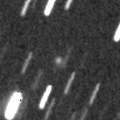
|
Now it is 15.6 mag (Nov. 22, Sandor Szabo). It stays observable at 16 mag for a long time until summer in 2018. It is observable in good condition in the Northern Hemisphere in 2017, and in the Southern Hemisphere in 2018.
Date(TT) R.A. (2000) Decl. Delta r Elong. m1 Best Time(A, h)
Dec. 2 0 12.92 52 29.4 1.226 1.942 122 15.8 19:25 (180, 73)
Dec. 9 23 38.94 44 25.7 1.283 1.888 111 15.8 18:25 (180, 81)
|

|
Now it is 16.3 mag (Nov. 15, Toshihiko Ikemura, Hirohisa Sato). It stays 16-17 mag for a long time from 2016 to 2019. It stays near by the equator.
Date(TT) R.A. (2000) Decl. Delta r Elong. m1 Best Time(A, h)
Dec. 2 10 32.33 3 55.2 9.491 9.568 91 16.0 5:20 (346, 58)
Dec. 9 10 33.30 3 55.7 9.377 9.570 98 16.0 5:23 ( 0, 59)
|
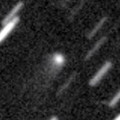
|
Now it is 16.3 mag (Nov. 15, Toshihiko Ikemura, Hirohisa Sato). It stays 16 mag for a long time from 2017 to 2018. It is observable in excellent condition in the Northern Hemisphere. It locates very low in the Southern Hemisphere.
Date(TT) R.A. (2000) Decl. Delta r Elong. m1 Best Time(A, h)
Dec. 2 9 10.45 27 30.5 4.802 5.328 117 16.2 4:28 ( 0, 82)
Dec. 9 9 6.46 28 50.6 4.697 5.329 125 16.1 3:56 ( 0, 84)
|

|
Now it is 15.3 mag (Nov. 22, Sandor Szabo). It will be fading after this, and it will be fainter than 18 mag in March.
Date(TT) R.A. (2000) Decl. Delta r Elong. m1 Best Time(A, h)
Dec. 2 0 54.22 17 10.8 2.271 2.988 128 16.3 20:09 ( 0, 72)
Dec. 9 0 54.78 17 12.6 2.362 3.001 121 16.5 19:42 ( 0, 72)
|
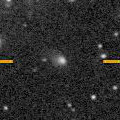
|
Now it is 16.2 mag (Nov. 16, Toshihiko Ikemura, Hirohisa Sato). It is expected to brighten up to 13-14 mag from 2018 to 2019. In the Northern Hemisphere, it stays observable in good condition for a long time. In the Southern Hemisphere, it is not observable until summer in 2018.
Date(TT) R.A. (2000) Decl. Delta r Elong. m1 Best Time(A, h)
Dec. 2 18 42.16 44 11.7 5.180 4.973 72 16.5 18:18 (121, 40)
Dec. 9 18 46.40 43 3.0 5.177 4.928 70 16.5 18:18 (121, 36)
|

|
Now it is 17.0 mag (Nov. 15, Kunihiro Shima). It will be observable at 16.5 mag in good condition in winter.
Date(TT) R.A. (2000) Decl. Delta r Elong. m1 Best Time(A, h)
Dec. 2 9 52.46 -4 46.4 2.493 2.797 97 16.7 5:09 ( 0, 50)
Dec. 9 9 55.80 -6 25.8 2.435 2.821 102 16.6 4:45 ( 0, 49)
|

|
Now it is 16.9 mag (Nov. 23, Toshihiko Ikemura, Hirohisa Sato). In the Northern Hemisphere, it will be observable at 17 mag in excellent condition from autumn to winter. It locates low in the Southern Hemisphere.
Date(TT) R.A. (2000) Decl. Delta r Elong. m1 Best Time(A, h)
Dec. 2 5 30.28 35 53.8 2.246 3.195 161 16.7 0:48 (180, 89)
Dec. 9 5 24.95 36 1.6 2.249 3.213 165 16.7 0:16 (180, 89)
|

|
Now it is 16.9 mag (Nov. 20, Toshihiko Ikemura, Hirohisa Sato). It will brighten up to 9 mag in 2018 summer. However, it is hardly observable when it is bright. In the Northern Hemisphere, it is observable only until March when it brightens up to 14 mag. In the Southern Hemisphere, it is observable from July to September in 2018, but it locates in extremely low.
Date(TT) R.A. (2000) Decl. Delta r Elong. m1 Best Time(A, h)
Dec. 2 21 53.55 67 7.6 3.069 3.479 106 16.9 18:18 (168, 56)
Dec. 9 22 3.65 64 45.0 3.017 3.399 104 16.7 18:18 (163, 58)
|
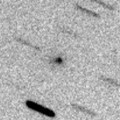
|
Now it is 17.2 mag (Nov. 2, A. Diepvens). It stays observable at 17 mag in good condition for a while. It will be fainter than 18 mag in May.
Date(TT) R.A. (2000) Decl. Delta r Elong. m1 Best Time(A, h)
Dec. 2 13 21.82 -2 32.3 2.578 2.088 50 16.7 5:20 (298, 30)
Dec. 9 13 35.16 -3 32.2 2.542 2.114 53 16.8 5:26 (303, 33)
|

|
It stays 15 mag from 2018 to 2019, and it will be observable for a long time in the Southern Hemisphere. In the Northern Hemisphere, it will never be observable again.
Date(TT) R.A. (2000) Decl. Delta r Elong. m1 Best Time(A, h)
Dec. 2 13 31.86 -41 19.8 6.013 5.327 42 16.9 5:20 (324, 0)
Dec. 9 13 37.35 -42 35.2 5.916 5.289 46 16.8 5:26 (328, 2)
|

|
Now it is 16.7 mag (Nov. 15, Toshihiko Ikemura, Hirohisa Sato). It will pass the perihelion in 2019. However, it has not been brightening since the discovery in 2010. It is observable in good conditioin in the Northern Hemisphere. It is not observable for a long time in the Southern Hemisphere.
Date(TT) R.A. (2000) Decl. Delta r Elong. m1 Best Time(A, h)
Dec. 2 6 53.24 75 11.3 8.270 8.855 123 16.8 2:12 (180, 50)
Dec. 9 6 47.13 75 41.6 8.235 8.843 125 16.8 1:39 (180, 49)
|

|
Now it is 16.0 mag (Nov. 16, Toshihiko Ikemura, Hirohisa Sato). It stays 16 mag from 2016 to 2017. In the Northern Hemisphere, it stays observable in good condition for a long time. In the Southern Hemisphere, it will never be observable again.
Date(TT) R.A. (2000) Decl. Delta r Elong. m1 Best Time(A, h)
Dec. 2 18 58.80 58 46.1 6.696 6.703 86 16.9 18:18 (141, 44)
Dec. 9 19 8.60 58 39.4 6.725 6.720 85 17.0 18:18 (141, 42)
|

|
Now it is 16.6 mag (Sept. 16, P. Camilleri, H. Williams). It will brighten up to 14 mag from autumn to winter in 2018, and it will be observable in excellent condition in the Northern Hemisphere. In 2017, it is observable at 17 mag in excellent condition in the Southern Hemisphere.
Date(TT) R.A. (2000) Decl. Delta r Elong. m1 Best Time(A, h)
Dec. 2 22 57.35 -35 8.1 3.519 3.526 82 17.1 18:18 ( 1, 20)
Dec. 9 22 59.33 -33 29.8 3.570 3.482 76 17.1 18:18 ( 7, 21)
|

|
Now it is 17.8 mag (Nov. 20, Toshihiko Ikemura, Hirohisa Sato). It will be fading slowly after this.
Date(TT) R.A. (2000) Decl. Delta r Elong. m1 Best Time(A, h)
Dec. 2 11 46.69 -10 25.8 2.929 2.735 69 17.2 5:20 (327, 38)
Dec. 9 11 51.72 -11 14.3 2.885 2.789 74 17.3 5:26 (335, 40)
|
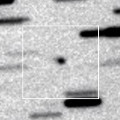
|
Now it is 17.3 mag (Nov. 24, Toshihiko Ikemura, Hirohisa Sato). It stays observable at 18 mag for a long time until 2019.
Date(TT) R.A. (2000) Decl. Delta r Elong. m1 Best Time(A, h)
Dec. 2 6 38.08 19 2.1 7.108 7.980 150 17.8 1:56 ( 0, 74)
Dec. 9 6 32.46 18 50.0 7.050 7.975 158 17.8 1:23 ( 0, 74)
|
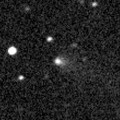
|
First return of a new periodic comet discovered in 2000. Now it is 17.1 mag (Nov. 11, Kunihiro Shima). Although it has been brightening even after the perihelion passage, it will be fading after this.
Date(TT) R.A. (2000) Decl. Delta r Elong. m1 Best Time(A, h)
Dec. 2 0 25.70 0 36.9 2.301 2.878 116 17.9 19:40 ( 0, 56)
Dec. 9 0 27.66 1 41.5 2.414 2.905 110 18.1 19:15 ( 0, 57)
|

|
Possible first interstellar object in the history. It approached to Sun down to 0.25 a.u. on Sept. 9. Now it is fading rapidly. It was 19.0 mag in mid October (Oct. 14, Catalina Sky Survey). But it has already fade down to 24.3 mag (Nov. 17, W. H. Ryan, E. V. Ryan).
Date(TT) R.A. (2000) Decl. Delta r Elong. m1 Best Time(A, h)
Dec. 2 23 17.70 7 8.5 1.777 2.220 103 26.0 18:33 ( 0, 62)
Dec. 9 23 19.73 7 34.1 2.042 2.369 96 26.4 18:18 ( 6, 63)
|
|
![]()
 30P/Reinmuth 1
30P/Reinmuth 1 C/2017 B3 ( LINEAR )
C/2017 B3 ( LINEAR ) C/2010 U3 ( Boattini )
C/2010 U3 ( Boattini ) C/2014 OE4 ( PanSTARRS )
C/2014 OE4 ( PanSTARRS ) (944) Hidalgo
(944) Hidalgo 103P/Hartley 2
103P/Hartley 2 C/2015 XY1 ( Lemmon )
C/2015 XY1 ( Lemmon ) 352P/2017 L1 ( Skiff )
352P/2017 L1 ( Skiff ) 1I/2017 U1 ( 'Oumuamua )
1I/2017 U1 ( 'Oumuamua )![]()





































